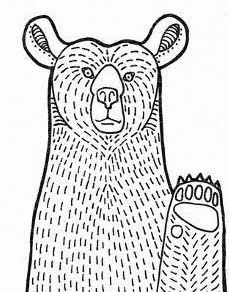Writing Tips
October 2019 - Bears!
Say that my evidence is this picture,

and my claim is that this bear is angry.
My reader may have some questions: "I only see a mouse - what bear is this person talking about?" "This bear looks friendly - why does this person think it is angry?" "Why do we care if the bear is angry, anyway?"
If I were being clear or precise enough, my reader wouldn't question me. So I follow this process, in order to avoid the questions:
- Give relevant evidence: Here is the bear I am talking about: (picture of bear)
- Interpret evidence: The artist depicted a bear here, reaching forward with one paw to aggressively swipe at the viewer.
- Justify this interpretation: While this creature may appear mouse-like because it's covered in fur and has large ears with small eyes, we can tell that this is a bear because of the nose: bears have sizable noses with visible nostrils, while mice don't. Furthermore, we can tell that the bear is trying to swipe at the viewer, rather than wave hello, because its claws are out. The bear wouldn't expose its claws if not for a violent act.
- Make your claim: Based on this evidence, the bear must be angry - if the bear were not angry, the bear would not have a motivation to violently strike the viewer.
- Connect to your thesis: By depicting the bear as angry and threatening, the artist is trying to demonstrate that bears are the worst animals.
Hopefully, this explanation would eliminate any questions my reader may have. Note that I don't necessarily agree with this argument/thesis! My personal opinion is that bears are great, and this is a friendly waving bear. However, it doesn't matter if this interpretation/claim is correct, just that it's a strong, well-explained argument.
This writing tip courtesy of Paige Bullock, writing liaison for Professor Lisa Leibowitz's Quest for Justice class.